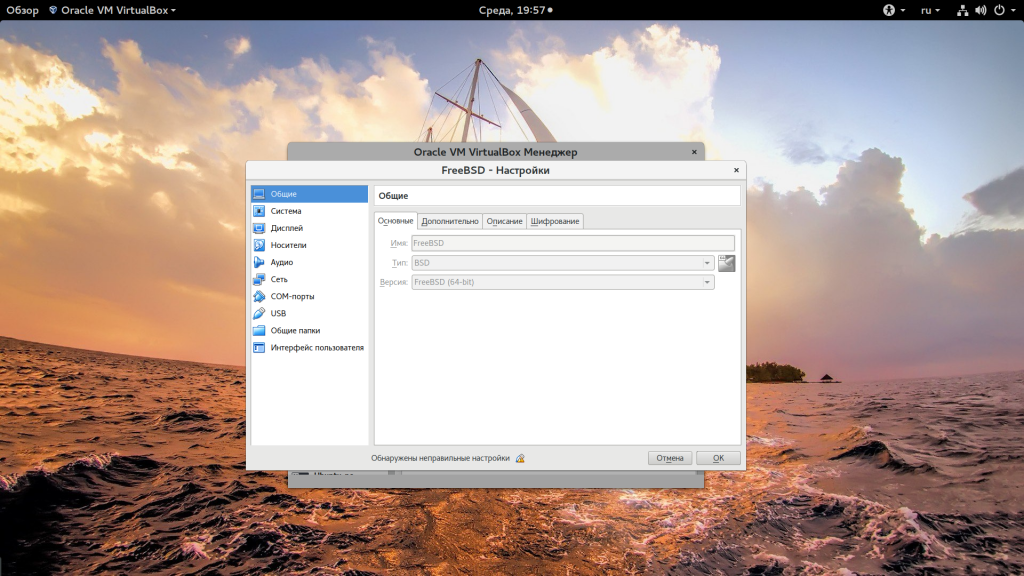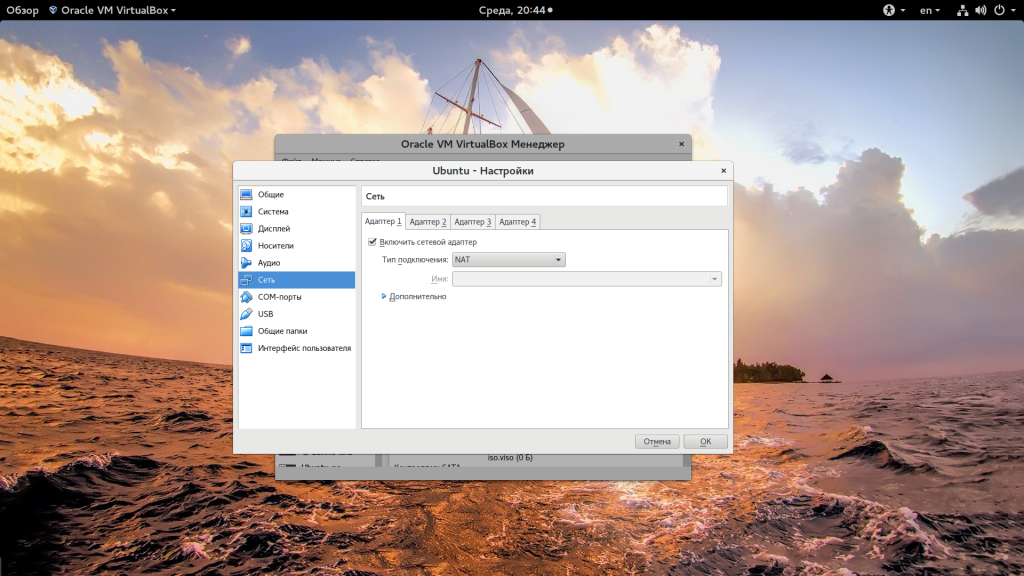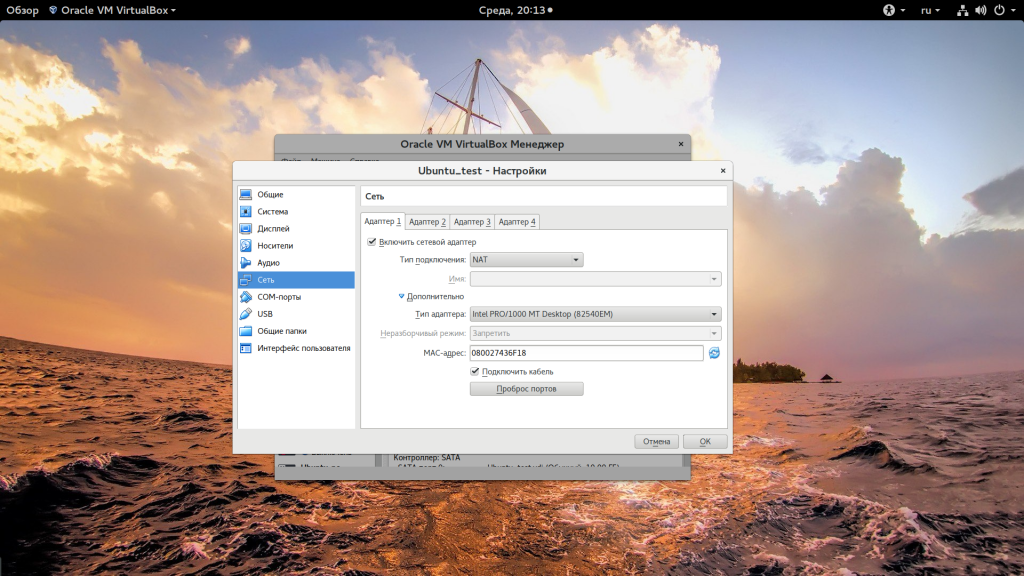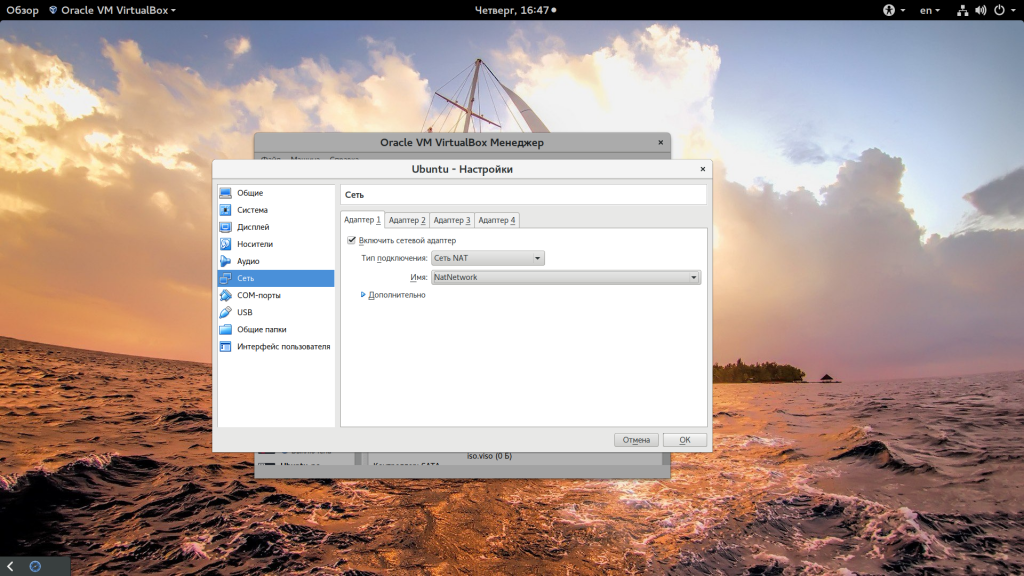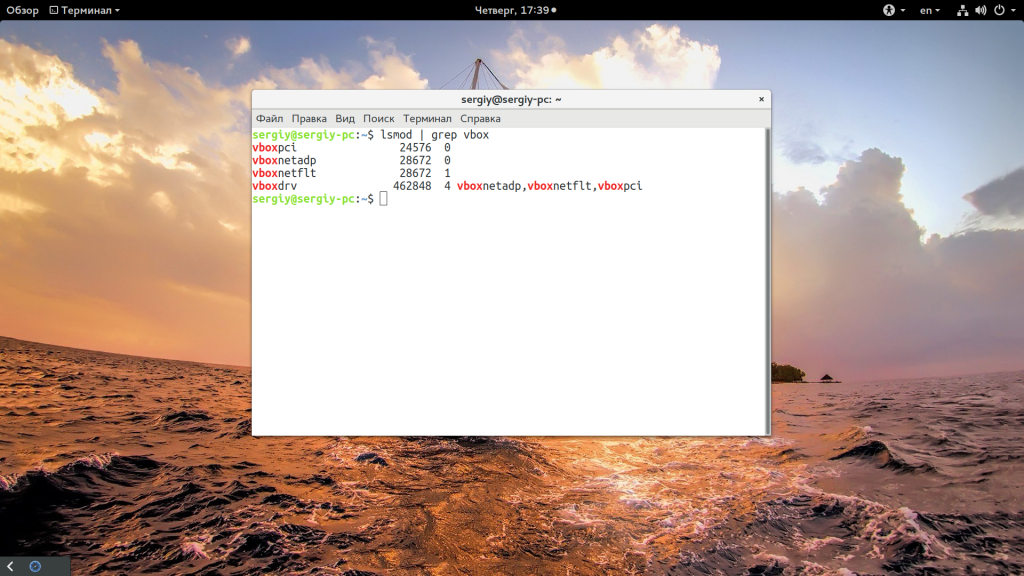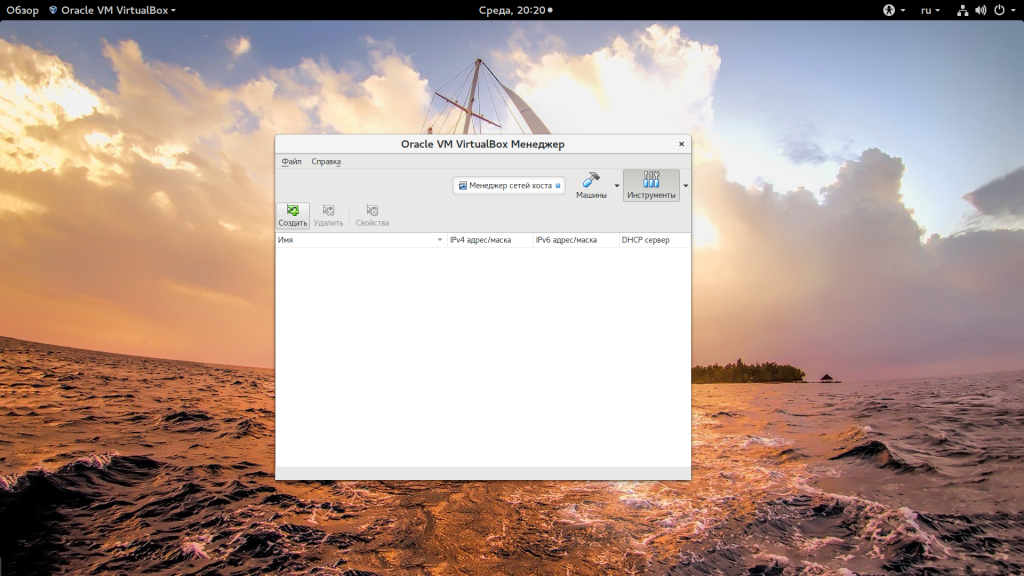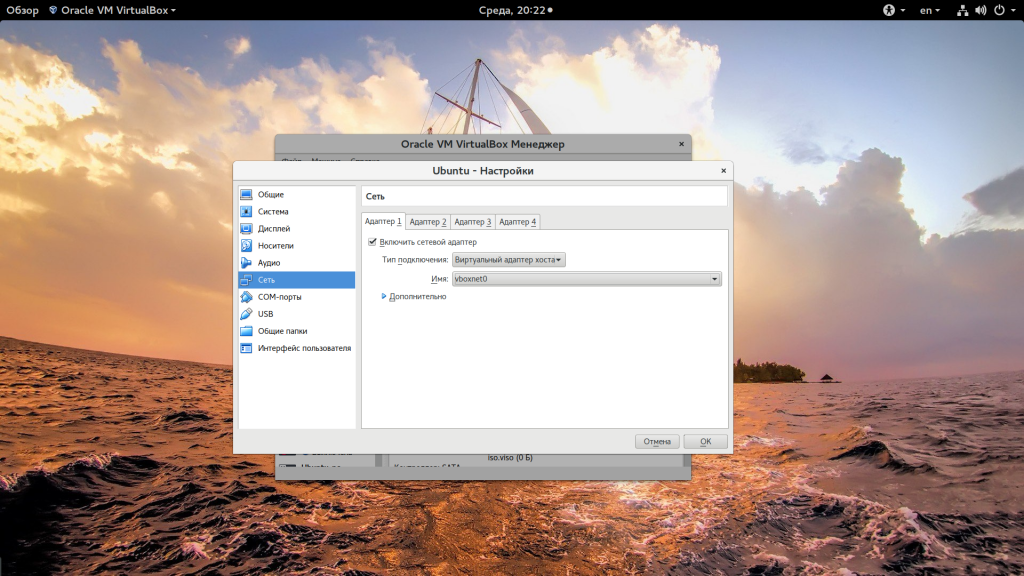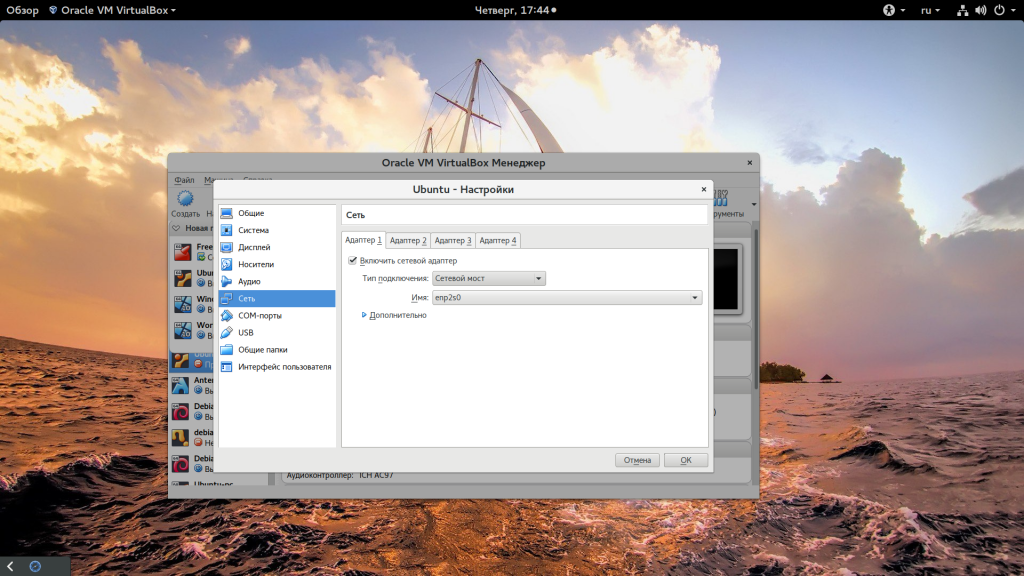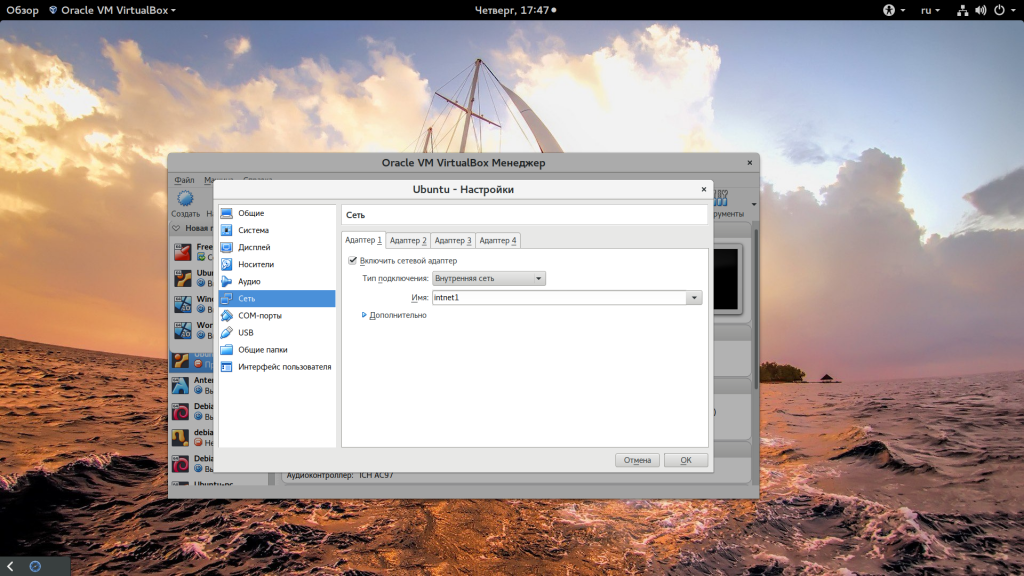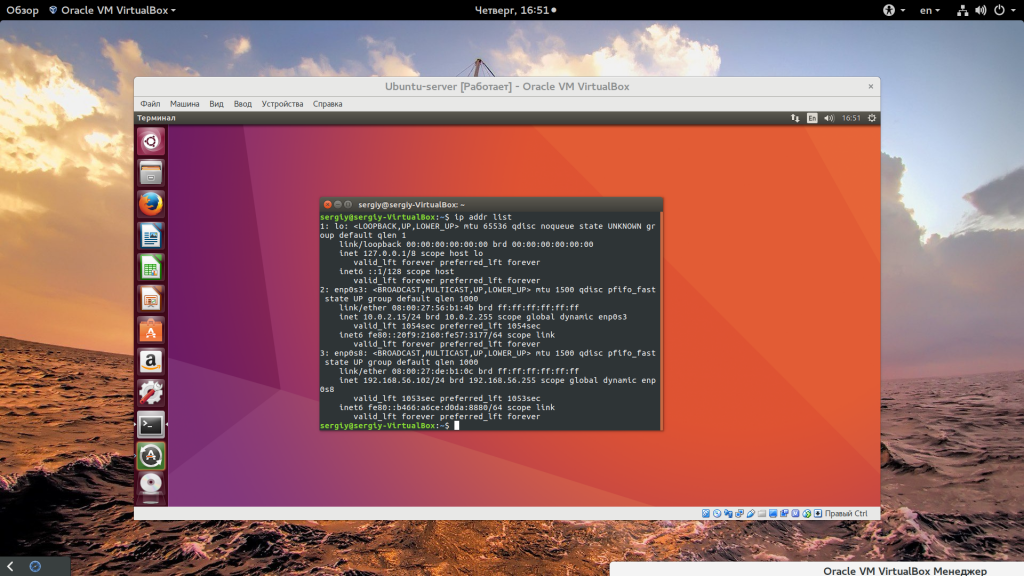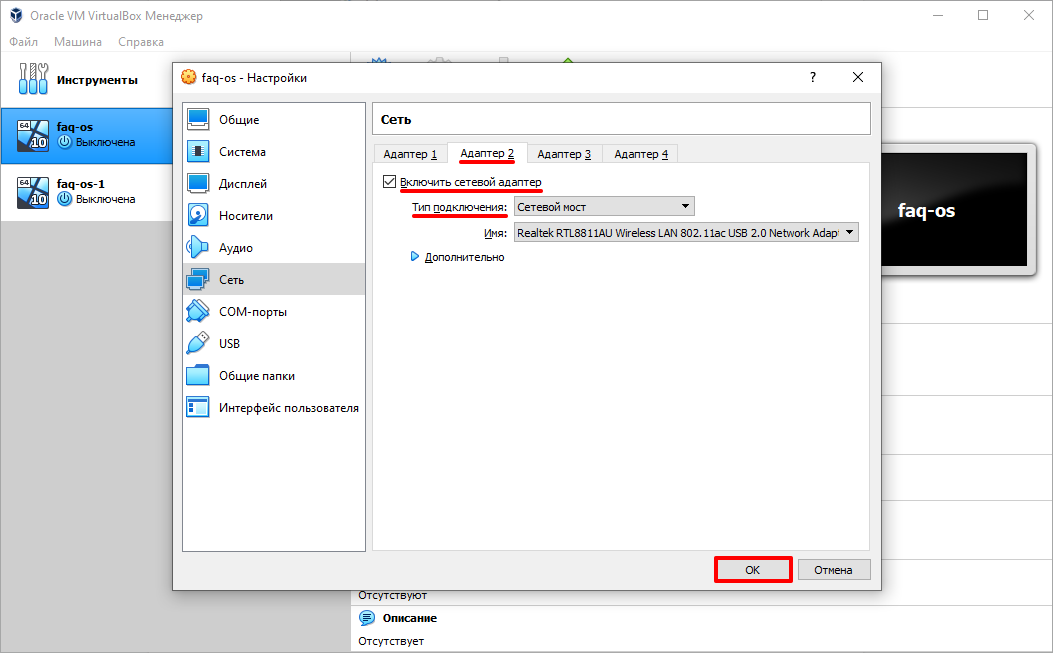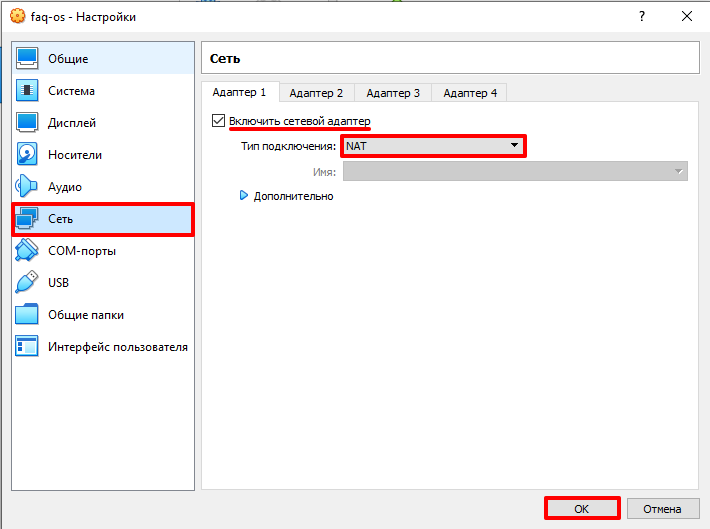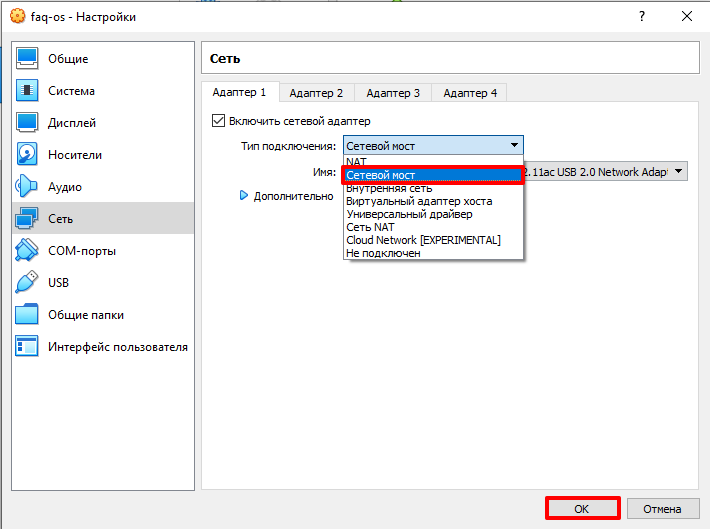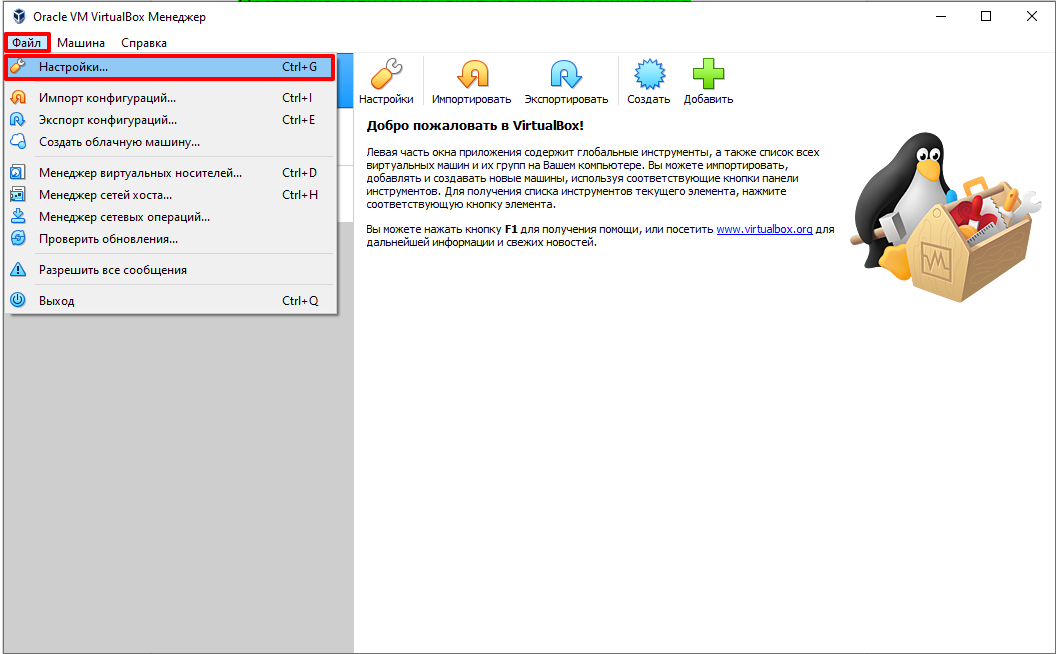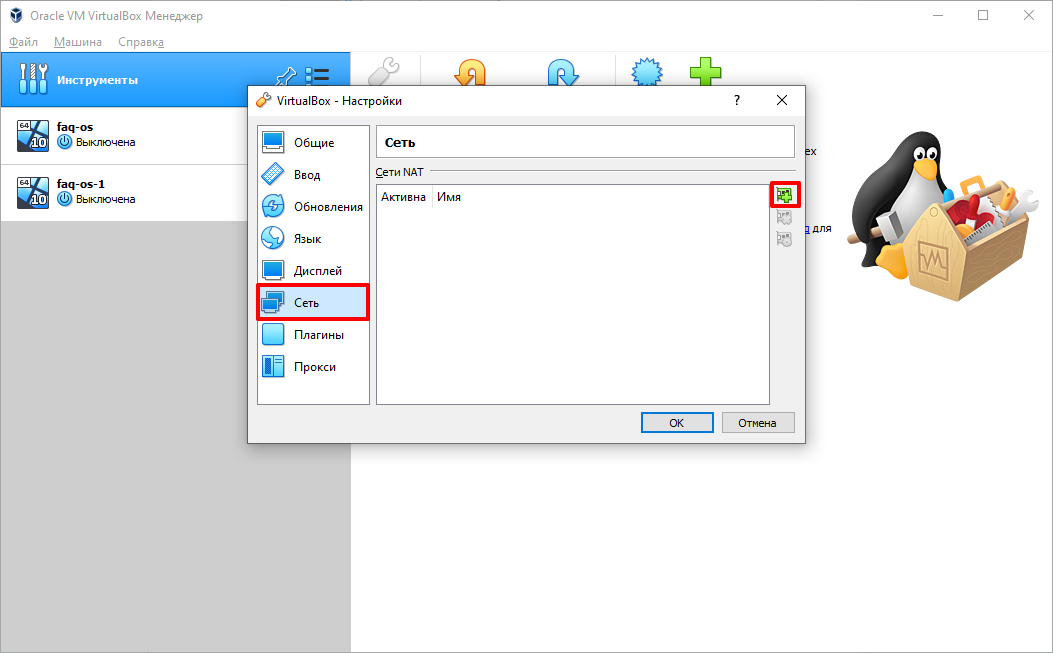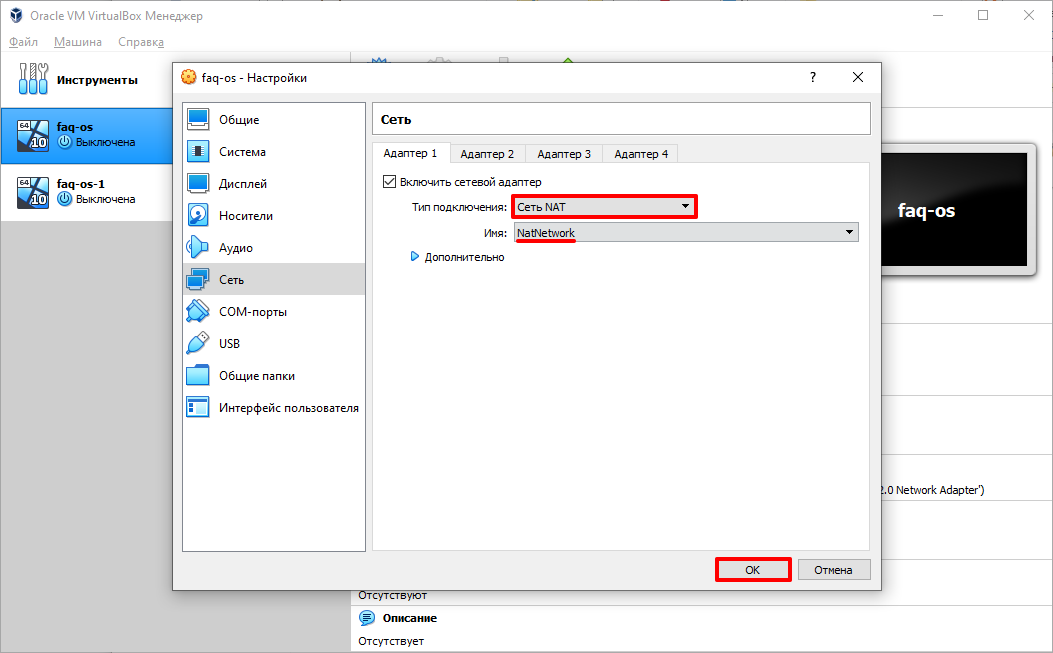Virtualbox пинг виртуальной машины
Настройка сети VirtualBox
Виртуальные машины VirtualBox очень часто используются для тестирования различного программного обеспечения и его взаимодействия между собой. Обычно, таким программам необходим доступ к интернету. Время от времени возникает необходимость протестировать работу программ по сети или даже создать небольшую тестовую лабораторию из виртуальных машин.
В этой инструкции мы рассмотрим как выполняется настройка сети VirtualBox различными способами. Вы узнаете как объединить машины в одну локальную сеть, как дать им доступ к интернету и как связать их с основной системой. Но сначала поговорим о том, как может работать сеть.
Виды сетевых адаптеров VirtualBox
Существует несколько способов как настроить сеть в virtualbox, и каждый из них подходит для лучше для решения одной задачи и меньше для другой. Рассмотрим основные:
Теперь рассмотрим каждый вариант настройки более подробно.
Настройка сети Virtualbox
1. Настройка сети NAT
Здесь почти нет о чем говорить. Получение доступа к сети через NAT включено по умолчанию. Проброс портов я рассматривал в отдельной статье. Но если вы раньше отключали сетевые адаптеры, то чтобы включить NAT обратно достаточно открыть настройки нужной машины:
Перейти на вкладку «Сеть»:
Выбрать один из адаптеров. К виртуальной машине можно подключить несколько адаптеров и это очень удобно, так как вы можете комбинировать вместе адаптер виртуального хоста и NAT чтобы получить преимущества обоих режимов. Дальше вам нужно выбрать пункт «NAT» в списке «Тип подключения».
На вкладке «Дополнительно» вы можете настроить марку устройства адаптера и MAC адрес:
Если вы собираетесь устанавливать туда в Windows, то лучше будет работать Intel PRO/1000 MT Desktop, а для Linux можно оставить AMD PCNet FAST III, так как он поддерживается всеми операционными системами.
2. Настройка сети NAT
Теперь все машины, подключенные к этой сети, будут доступны друг другу, как в VMWare.
3. Настройка адаптера виртуального хоста
Нажмите кнопку «Создать», затем, в появившемся адаптере, напротив пункта DHCP установите галочку «Включен».
Теперь вернитесь к списку виртуальных машин, зайдите в настройки машины, «Сеть»:
Для всех машин, которые вы хотите объединить в одну сеть нужно выбирать один и тот же адаптер хоста. Если вы захотите добавить машинам также доступ в интернет, просто перейдите на вкладку «Адаптер 2», включите его и настройте NAT, как описано в первом пункте.
4. Настройка сетевого моста VirtualBox
В поле «Имя» вам необходимо выбрать сетевой интерфейс, который будет использоваться для связи с внешним миром. Минус такого способа в том, что внешние компьютеры смогут получить доступ к виртуальной машине, а это не очень хорошо с точки зрения безопасности.
5. Внутренняя сеть VirtualBox
Выводы
В этой небольшой статье мы рассмотрели как выполняется настройка сети VirtualBox, как видите, это не так уж сложно, как может показаться на первый взгляд, несмотря на операционную систему, которую вы используете. В большинстве случаев достаточно сети NAT, но иногда может понадобиться виртуальный адаптер хоста, все же остальные режимы используются намного реже.
Не могу пинг гостевой ОС в VirtualBox, но можно пинговать хост
Я хочу подключиться к обеим гостевым ОС. Я попытался пропинговать обоих гостей, но это не работает.
Как можно пинг в Windows хоть 7 узлов.
7 ответов
Я был удивлен найти ответ, который, наконец, работал для меня в форуме ubuntu:
в зависимости от версии Windows, которую вы использовали в вашем VirtualBox, для того, чтобы иметь возможность получить ответ на ваши пинги вы, вероятно, необходимо создать по крайней мере одну папку на машине Windows. Например, в Windows XP после настройки хотя бы одной общей папки устройство будет отвечать на запросы ping. А если нет акции, не пингует будут возвращены.
Так что в основном то, что я сделал было:
EDIT: чтобы уточнить, моя настройка-Windows7 Host & Windows7 Guest.
вот надеюсь, это кому-то поможет.
Если вы хотите, чтобы ваша виртуальная машина была доступна в сети, как автономная машина (я думаю, это то, что вы пытаетесь сделать), проверьте следующее
в VirtualBox GUI interface, в разделе сетевые настройки каждой виртуальной машины, выберите режим моста, а не NAT.
в каждой виртуальной машине настройте статический IP-адрес или dhcp.
для брандмауэра блокировки вопрос, проверить мой ответ на другой вопрос здесь
на хостинге, в проводнике, перейдите в
Панель управления\все элементы панели управления\Брандмауэр Windows\разрешенные приложения
вышеуказанный путь для windows 8, другая версия windows может отличаться слегка.
протестировано на двух гостевых коробках Ubuntu 16.06
auto enp0s8 iface enp0s8 inet dhcp
после этого изменения вы перезагрузите машину, и теперь при запуске «ifconfig» должен получить IP-адрес адаптера только для хоста, который вы можете использовать для подключения с вашей хост-машины.
обе гостевые ОС имеют разные IP-адреса. Я могу пинговать хост от обоих гостей, гостя к гостю и гостей к хосту.
Can’t ping VirtualBox? Troubleshooting Guide and Solution
If you have just installed a guest OS like a Linux distro, Windows 10 or macOS on VirtualBox and you are hosting some network service on that virtual machine, then you need to configure some settings on the virtual box so that you can ping to that virtual machine and communicate with it over the network from any machine on your local network.
This article shows you the configuration changes you need to make on your virtual box in order to make it possible. I have written this article keeping complete beginners in mind, so instead of just answering the question “what to do to make it work?” I have also answered the questions “why it doesn’t work?” and “what is the reason behind the default settings?“
If you are an advanced user, or if you are just interested in the solution then feel free to just skip to section 5 “The short version of the answer” section using the table of contents below.
VirtualBox Basics
This section gets you introduced to the various terminology used in the rest of the article.
What is VirtualBox? VirtualBox is a hypervisor application that lets us host operating systems in a virtualized environment. In simpler words, its basically an app that runs on one operating system (The Host Operating System) and lets us boot other operating systems (Guest OS) as an app within the Host OS.
The Host OS can be Windows or Linux or Mac OS, and the guest can also be one of these. So if you have a Macbook and you wish to run some windows applications on it, which are not available for macOS, then you can run it by installing Windows inside VirtualBox.
Configuring VirtualBox
What are the configuration options available in a VirtualBox to share resources between Host and Guest OSes?
VirtualBox lets us allocate resources for the Guest OS. These resources include the following
You can get to these options by clicking on the settings icon as shown in the image below.
Let’s assume your computer running the Host OS is a Windows 10 laptop that has a quadcore processor, 16GB of RAM and 1TB of hard disk space. If you wish to run Linux on it, you can tell the virtual box app to allocate it one of the CPU cores, 4GB of RAM and 25GB of hard disk space so that you can run both these operating systems smoothly and simultaneously.
If you wish to run more than one Guest OS, then that is also possible, you just need to have enough resources and allocate them to each of the Guest OS appropriately so that there are enough resources left for the Host OS, Windows 10 in our example, to run smoothly.
Other than CPU, RAM, and hard disk space, you can also allocate networking resources and USB devices to the guest OS.
Mouse and Keyboard will automatically be transferred to the guest OS as soon as you give focus to the virtual machine by clicking on it.
Assume you have another USB device that you need to use from the guest OS. Then using the configuration options, you can specify it in the settings so that the special USB device also transferred to the guest OS once you boot it up.
Now that we have seen the basic configuration options of VirtualBox, lets next look at the network configuration options, which is the main focus of this article.
Network Configuration Options in VirtualBox
You can get to the network configuration options by clicking on the Network tab as shown in the picture below.
These are the default settings that VirtualBox provides you with once you install any Guest OS on it. As you can see the “Attached to” field is set as NAT.
Meanings of these Network Options
The table below shows the various available options for the Attached to field shown in the screenshot above and their meanings
